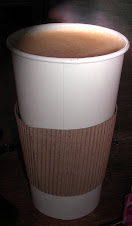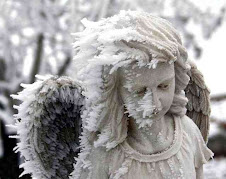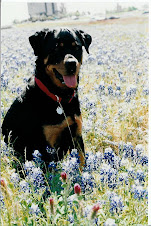“I like big dumps!” So says my nalgene water bottle and my bag of ski gear that waits patiently in the corner all week long, waiting for the weekend. Big dumps are great for skiing. This year, in Colorado, they are also great for disaster – we are having one of our biggest avalanche years ever.
For Christmas, Guy and I gave each other Avalanche Beacons and skins for our back country skis. So this weekend was about learning how to be safe in the back country. We took a 2 ½ day avalanche course from the Colorado Mountain School.
The first night was classroom work given at Rock Climb Boulder, a climbing gym in Boulder. On breaks, we could watch the climbing competition going on outside our 3rd floor room. During class, we learned about weather conditons, terrain considerations and traps, snow pack qualities, and other considerations to avoid avalanche danger in the back country. A case study of an avalanche accident put it all together. The next night we’d watch the video put together by the ski party from that accident, a sobering movie called “A dozen more turns.” It’s available on YouTube.
Saturday’s class was in Estes Park. Our little group gathered at the CMS location in Estes Park for morning indoor sessions. In the afternoon, we bundled up and ventured out to Estes park for practice finding buried avalanche beacons. There’s a technique to using them… not complicated but needs to be systematic. There’s a technique to digging out buried victims.. not complicated but… you get the idea.
We spent the evening with a few more courses and a couple videos that ranged from graphic details of the accident mentioned above to nearly ski porn with a little education thrown in for good measure. In between, relaxing with our fellow classmates and getting to know these other snow junkies. Skiiers, boarders, hikers, snow shoe trampers. Some were also ice climbers and rock climbers wanting to know how to get around the avalanche danger to reach their fave climbs.
Sunday morning we reviewed the avalanche report from the Colorado Avalanche Information Center. Very detailed reports on recent avalanche activities, weather events that affect the snow, and conditions of the snow pack itself. Very informative. http://avalanche.state.co.us/ if you are interested. Then we suited up and went back to Estes Park.
On this trip, we took snow shoes and packs with everything we’d need for the day plus a few emergency supplies. We hiked up above the lake at our starting point, across the next lakebed, and then started scouting for signs of avalanches. We passed another part of our class digging snow pits to examine the snow and climbed above them to dig a pit of our own.
While we snacked, our guide Eli demonstrated how to dig a pit. Then he taught us compression and shear tests on snow columns and what the tests told us about the snow pack. Basically, all snow tests are inconclusive… they teach you about danger in that spot (the one where you just ruined the good powder) and don’t really tell you much about what is 10 ft away. Snow science is fascinating and it does give you bits of information you might use to predict snow conditions. However, it’s hard to extrapolate and the bigger picture is often more useful.
After our first pits, we hiked up to the next lake which was crowded with hikers and very windblown. We found a deep area on the south side of the lake where a north facing wall was drifted and protected from getting much sun. We divided into groups and dug pits to repeat the testing. Digging was harder than it looked and this was relatively loose snow… nothing like the concrete you dig in if there is an avalanche. The tests were interesting and trying to do them correctly was a challenge. We covered our pits by crushing all the available good powder on that slope (we’d found it to be unstable anyway) and moved on.
Next we hiked up to Emerald lake for a final set of pits and snowpack tests. Eli pointed out the Dragon Tails Couloirs, obviously a favorite place to ski… narrow, flanked by rock ridges, and apparently deep enough with powder to be fantastic. The sun was beginning to dip below the ridges and the temps dropped about 5 degrees before we headed back down. It was good to be on the move and warming up again.
About ½ way back down to the parking area, Eli went ahead and buried beacons in the drainage below. He yelled that there had been an avalanche. We all switched our beacons to SEARCH and ran forward to find the “victims” (poor defenseless beacons buried alive in the snow). Once over the ridge we yelled to Eli, “how many victims?” “Two,” he replied. “Where were they last seen?” we asked as we followed the signals on the beacons. “In this area,” he indicated. We followed the signals, calling out our approximate distance from the buried victims. The first 3 people were pinpointing the location of one victim and the rest of us began our systematic search for the other. We found and dug out both within 4 ½ minutes.
We had another shot at finding victims over the next ridge. Victims found within 15 minutes have a 92% chance of survival depending on any trauma they might have suffered. Chances drop precipitously if they are found any later than that. We had a harder time on the second attempt, the pinpoint was a little off on the second victim. Still, a good enough time for survival.
We returned to the mountain school to gather our things and say farewell to our new friends. The class had been full of interesting and amazing people. Some, I’m sure we’ll see again. All of them I hope never need to use the skills we learned and certainly never need to be on the receiving end. A fabulous, interesting and valuable class!
Sunday, January 13, 2008
Subscribe to:
Post Comments (Atom)












No comments:
Post a Comment